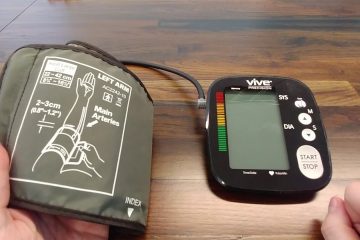Understanding Upper Back Pain: Causes And Symptoms

Upper back pain is an issue that affects millions of people worldwide, impacting their daily lives and activities. It can occur for various reasons, and understanding its causes, symptoms, and treatments is essential to managing and, in some cases, preventing this discomfort. This comprehensive guide aims to provide valuable information to help you better understand upper back pain and what you can do to relieve it.
Causes of Upper Back Pain
Poor posture
Maintaining an improper posture, especially when sitting at a desk for extended periods, places added stress on the upper back. Hunched shoulders and a forward-leaning head are common culprits, leading to increased muscle tension and upper back pain. Check out this helpful blog post to learn more about the impact of poor posture on back pain.
Muscle strain
Overusing or improperly using your upper back muscles can cause strain and inflammation, leading to discomfort. Activities involving repetitive movements or lifting heavy objects can result in muscle strains, leading to upper back pain.
Herniated disc
A herniated disc in the upper back, although less common, can cause pain if it presses on a nearby nerve. Disc herniation occurs when the soft, jelly-like center of a spinal disc protrudes through the tough outer layer, sometimes due to injury or aging.
Psychological factors
Stress and anxiety can manifest as physical pain, including in the upper back. The tension generated by psychological stressors can cause muscle stiffness and discomfort.
Other conditions
Some medical conditions can cause upper back pain as well. For example, osteoporosis (a condition that weakens bones due to decreased bone density) can lead to vertebral fractures and upper back pain.
Symptoms of Upper Back Pain
The symptoms of upper back pain can vary depending on the underlying cause. Some common symptoms include:
- Stiffness or tightness in the upper back and shoulder area.
- Pain that worsens with movement or certain activities.
- A dull, aching sensation in the upper back.
- Sharp, shooting pain in the shoulder or arm.
- Tingling or numbness in the upper back, neck, or extremities.
Treating Upper Back Pain
Self-care measures
For most cases of upper back pain, adopting simple self-care measures can help alleviate discomfort. Applying ice or heat packs, taking over-the-counter pain medications, engaging in gentle stretches, and massaging the affected area are all ways to manage pain. Additionally, making lifestyle changes to correct poor posture can also help alleviate some upper back pain.
Professional care
In more severe or persistent cases, seeking professional care may be advised. This can include upper back pain treatments such as physical therapy, chiropractic adjustments, or even surgical intervention in some cases. A healthcare professional can assess your condition and choose the appropriate treatment plan.
Stress management
As psychological factors can contribute to upper back pain, learning to manage stress is essential. Techniques such as deep breathing exercises, meditation, and progressive muscle relaxation can help alleviate stress and, in turn, reduce pain.
To Sum Up
Upper back pain can have a significant impact on your quality of life and daily activities. Understanding the causes, symptoms, and treatments associated with it is essential to managing or preventing discomfort. This guide has provided valuable information to help you better understand upper back pain and how to address it. If you are suffering from this condition, speak with a qualified healthcare provider for upper back pain in Baltimore to determine the right treatment plan for you. Taking proactive steps to manage or prevent upper back pain can help you get back to living your best life!









